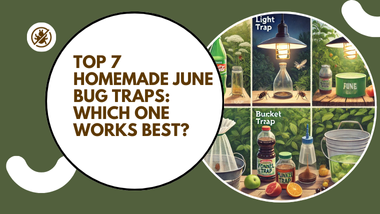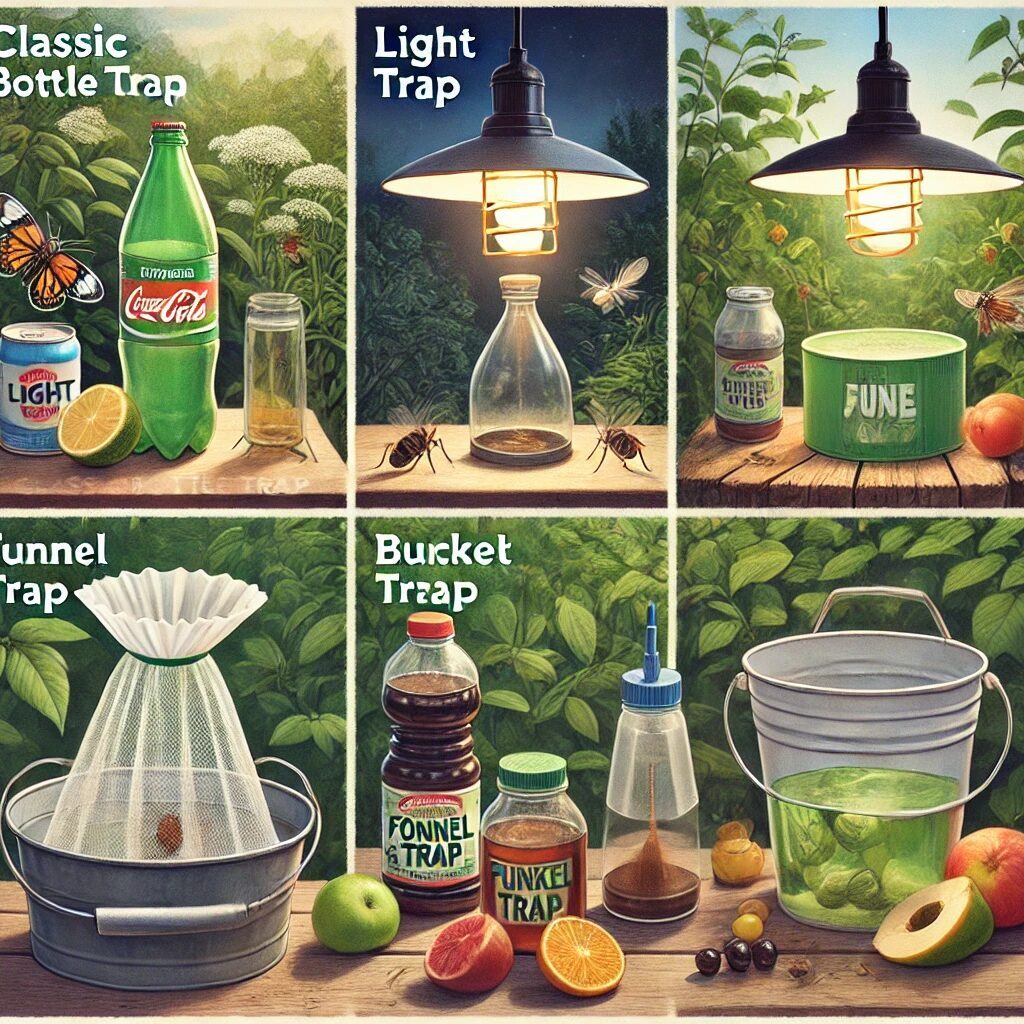
Homemade June Bug Traps can save your garden from destruction. Did you know that June bugs can consume up to 30% of their body weight in leaves each night?
That’s a staggering amount of damage they can inflict on your garden! If you’re tired of watching your plants get devoured by these pesky critters, you’re not alone. Many homeowners are on the hunt for effective solutions to keep these nocturnal invaders at bay.
The good news? You don’t have to rely on expensive pesticides or traps from the store. There are plenty of effective homemade June bug traps that you can easily make with items you probably already have at home.
In this article, we’ll explore the top seven homemade June bug traps to help you determine which one is the best fit for your needs.
- Classic Bottle Trap
- Light Trap
- Funnel Trap
- Natural Attractants
- Bucket Trap
- Homemade Pesticide
- Organic Methods
Stick around until the end to discover which trap stands out as the ultimate June bug catcher!
1. Classic Bottle Trap: A Simple DIY Method
The classic bottle trap is an effective and eco-friendly way to manage June bug populations. This easy DIY project requires minimal materials, making it accessible and budget-friendly. Here’s how you can set up a trap to keep those pesky bugs at bay.
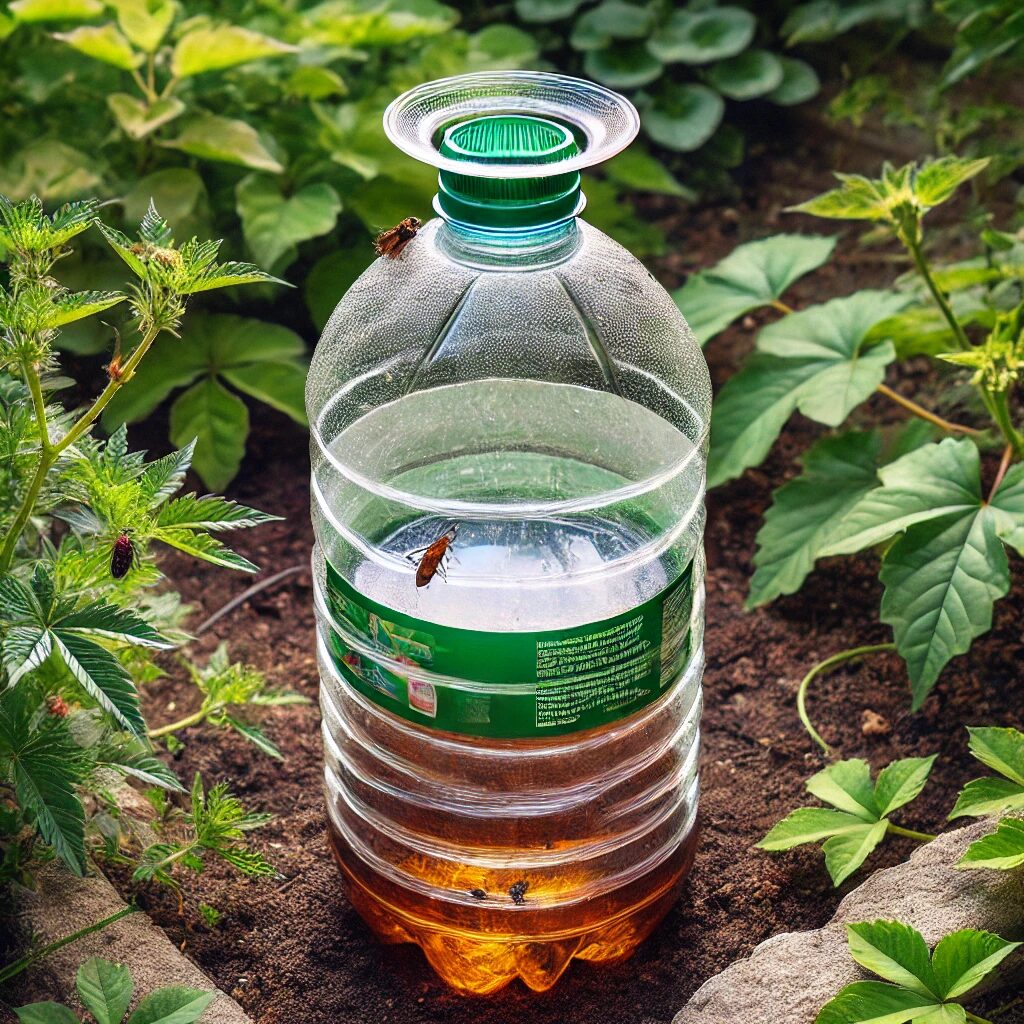
Materials Needed
- Plastic bottle (e.g., a 2-liter soda bottle)
- Sugar water or molasses (to act as bait)
Step-by-Step Instructions
- Prepare the Bottle: Start by cutting the top third off the plastic bottle. You’ll use the bottom part to hold the bait and the top part as a funnel.
- Create the Funnel: Invert the top part of the bottle and place it into the bottom part. The bottle’s mouth should be facing downward, creating a funnel shape. This design makes it difficult for bugs to find their way out once they enter.
- Add the Bait: Pour a small amount of sugar water or molasses into the bottom of the bottle. The sweet scent will attract June bugs, drawing them into the trap.
How It Works
The sugary bait acts as an attractant for the June bugs, who will crawl or fly into the bottle through the funnel. Once inside, they find it hard to escape due to the narrow opening of the funnel. This method is straightforward and doesn’t involve any harmful chemicals, making it safe for both your garden and local wildlife.
Effectiveness
Gardeners have found this bottle trap quite effective at reducing June bug numbers. By placing multiple traps around your garden, you can control the June bug population naturally. Remember to check the trap regularly and dispose of the bugs as needed. These simple, non-toxic homemade June bug traps are an excellent alternative to chemical treatments, helping you maintain a bug-free garden with minimal effort.
2. Light Trap: Attracting June Bugs with Brightness
Using a light trap is a simple yet highly effective way to catch June bugs, especially since they are naturally attracted to light. This method is ideal for summer evenings when these insects are most active, and it allows you to monitor and control their presence in your garden without using chemicals.
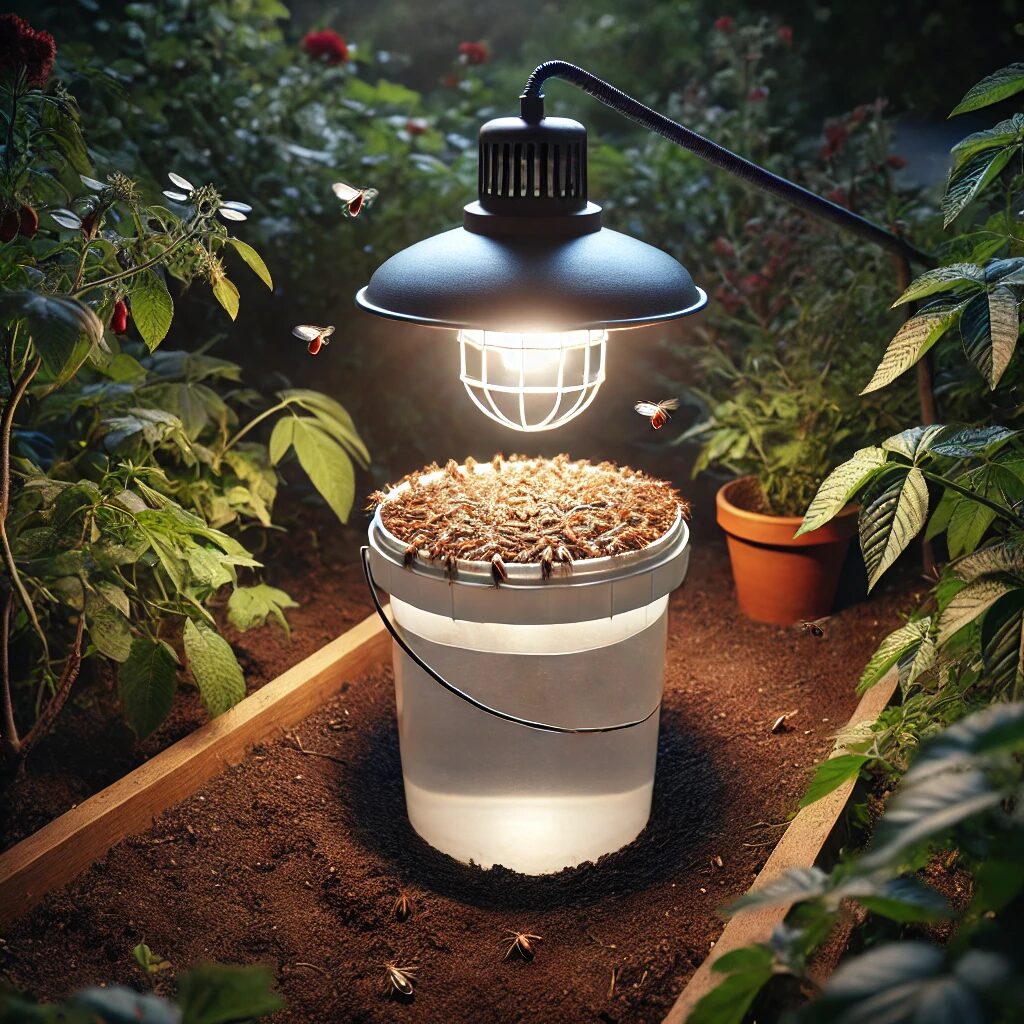
Materials Needed
- A light source (e.g., a lamp, flashlight, or string of outdoor lights)
- A container (such as a bucket)
- Water (optional: add a few drops of dish soap to enhance effectiveness)
Step-by-Step Instructions
- Choose a Location: Set up your light source in a dark area of your yard, preferably near plants that June bugs tend to infest.
- Position the Container: Place the bucket directly beneath the light source. For an added boost, you can fill the bucket with water and a few drops of dish soap, which will help trap the bugs by reducing the surface tension of the water.
- Turn on the Light: As darkness falls, switch on the light. The brightness will draw June bugs in, causing them to fly towards the light and then fall into the water below.
How It Works
June bugs are phototactic, meaning they are instinctively drawn to light. By setting up a light source over a water-filled bucket, you’re leveraging their natural behavior to trap them. Once the bugs fly towards the light, they typically fall into the bucket, where they either get trapped in the water or struggle to escape due to the soap.
Effectiveness
The light trap method is especially effective on warm summer nights, which are peak times for June bug activity. Many gardeners report that this trap yields a high catch rate, particularly when placed near plants that June bugs commonly infest.
Not only is it easy to set up, but it’s also a low-maintenance way to monitor June bug populations and protect your garden. Regularly empty the bucket and reset the trap as needed to keep your yard free from these pests.
3. Funnel Trap: A Creative Solution for June Bug Control
The funnel trap is an innovative and easy-to-make solution for managing June bugs in your garden. Using a funnel helps ensure that the bugs stay trapped, making this method both efficient and reliable.
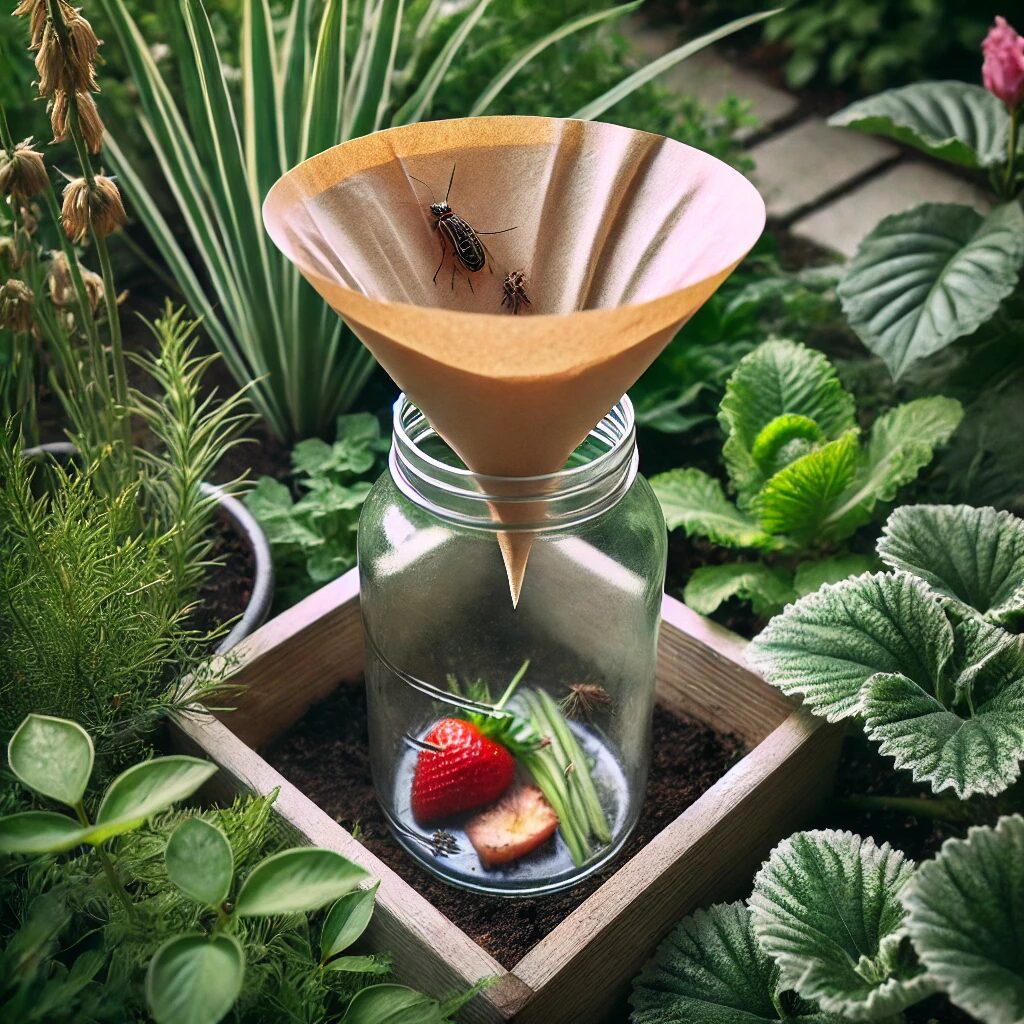
Materials Needed
- A funnel (can be made from paper or a kitchen funnel)
- A jar or container (large enough to hold multiple bugs)
- Bait (such as fruit pieces, sweet syrup, or sugar water)
Step-by-Step Instructions
- Set Up the Funnel: If you don’t have a funnel, you can make one by rolling a piece of paper into a cone shape. Place the funnel upside down inside the jar or container, ensuring it fits snugly. The narrow end of the funnel should be facing downwards into the jar.
- Add the Bait: Place your chosen bait inside the jar. June bugs are attracted to sweet scents, so fruit or sweet syrup works well.
- Position the Trap: Place the trap in an area where you’ve noticed June bug activity. Since they’re most active at night, setting up in the evening will yield the best results.
How It Works
The funnel acts as a one-way entrance for the June bugs. Drawn by the scent of the bait, they’ll crawl into the jar through the funnel. Once inside, the bugs struggle to find their way back out due to the narrow and downward-facing funnel opening. This trap effectively captures June bugs and minimizes their chance of escape.
Effectiveness
The funnel trap has been widely praised by gardeners for its simplicity and reliability. The narrow funnel makes it difficult for the bugs to escape, ensuring that once they’re in, they stay in. Remember to check the trap regularly and empty it as needed.
These homemade June bug traps are a great chemical-free option that provides consistent results for managing June bug populations in your garden.
4. Natural Attractants: Using Fruits and Foliage to Lure June Bugs
If you’re looking for a simple, eco-friendly way to manage June bugs, try using overripe fruits as bait. This method requires minimal materials, using items you may already have around the house, and can be highly effective for keeping these pests under control.
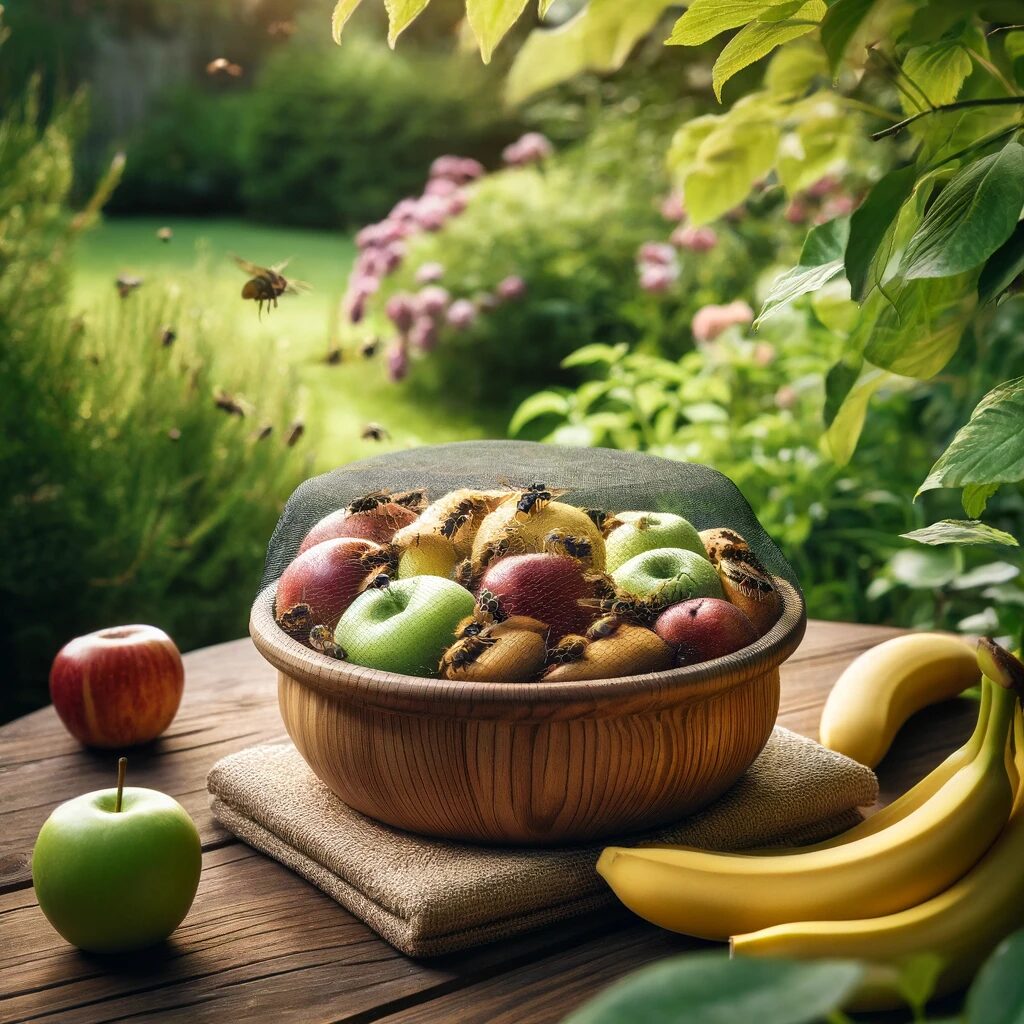
Materials Needed
- Overripe fruits (such as bananas, apples, or peaches)
- A container (like a bowl, jar, or shallow dish)
Step-by-Step Instructions
- Select Your Bait: Choose overripe fruits with a strong, sweet scent, as these will be the most attractive to June bugs.
- Prepare the Trap: Place the fruit in your chosen container. You can mash the fruit slightly to release more scent and increase its attractiveness.
- Set Up in the Garden: Position the container in an area of your garden where you’ve observed June bug activity. For best results, place it near plants they tend to infest.
How It Works
The sweet aroma of overripe fruit naturally attracts June bugs, drawing them to the container. Once they reach the fruit, they’ll stay close to feed, making it easy for you to collect and dispose of them. This method is entirely natural and safe, using no chemicals or artificial bait.
Effectiveness
Many gardeners find that using overripe fruits is a highly effective way to attract and manage June bugs. Not only does it help control bug populations, but it also makes use of food waste that would otherwise be discarded.
By setting out multiple containers, you can cover larger areas of your garden and increase your chances of catching more bugs. Check the containers regularly and replace the fruit as needed to maintain its effectiveness.
These homemade June bug traps are both environmentally friendly and practical, providing a sustainable way to protect your garden.
5. Bucket Trap: The Ultimate Catch-All for June Bug Control
The bucket trap is a powerful and easy-to-set-up solution for catching large numbers of June bugs. This method is particularly effective if you have a significant June bug infestation and want to manage it quickly. With just a few basic materials, you can create a trap that captures bugs en masse.
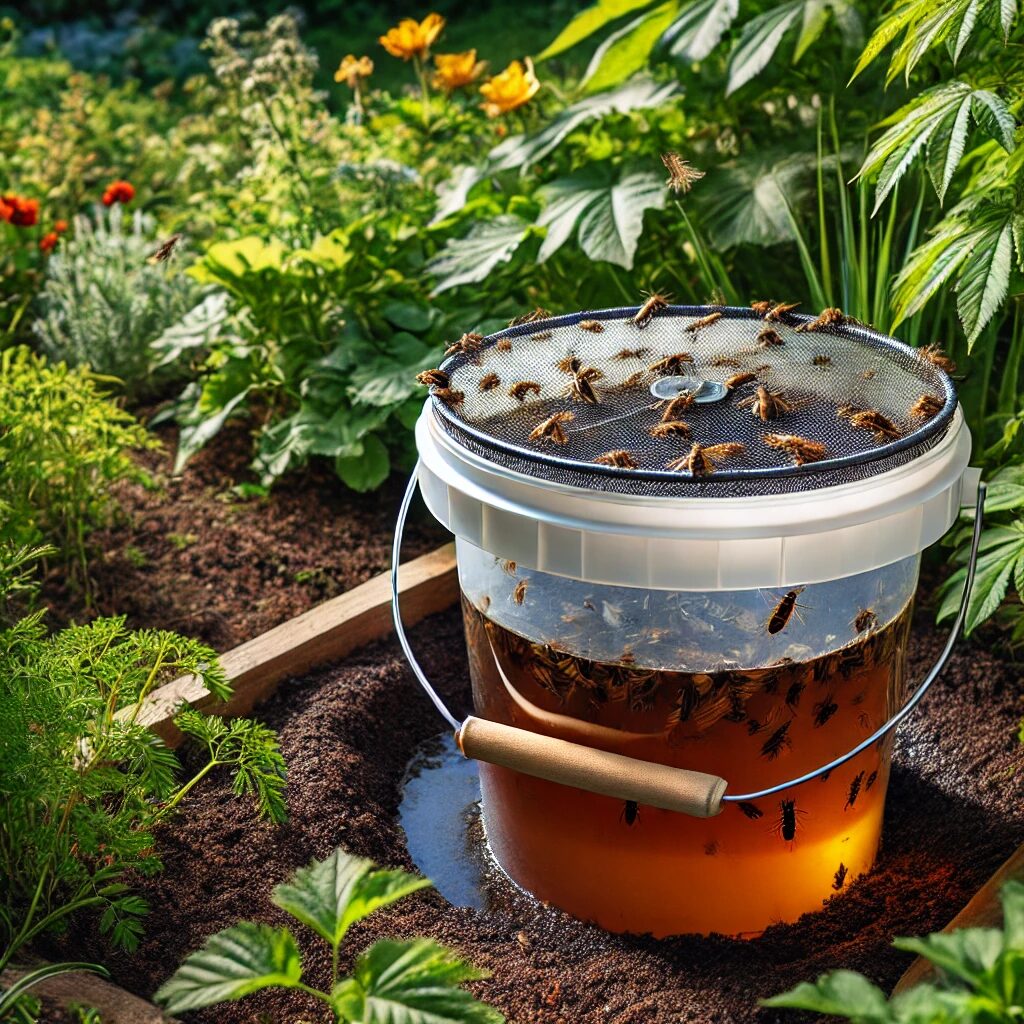
Materials Needed
- A bucket (choose a size depending on the scale of your infestation)
- Water
- Bait (molasses, sugar, or another sweet attractant)
Step-by-Step Instructions
- Prepare the Bucket: Fill the bucket with water. Leave a few inches of space at the top to prevent spills.
- Add the Bait: Stir in a few tablespoons of molasses or sugar until dissolved. The sweet scent will attract the June bugs to the bucket.
- Position the Trap: Place the bucket in your garden, ideally in a spot where June bugs are frequently seen. For best results, set it up in the evening when they are most active.
How It Works
The sweet bait attracts the bugs, luring them to the surface of the water. Once they land, they often cannot escape due to the water’s surface tension. Adding a bit of dish soap to the water can enhance this effect by reducing surface tension, making it even harder for the bugs to escape.
Effectiveness
Gardeners have found the bucket trap to be one of the most effective solutions for quickly reducing June bug populations. Its ability to catch large numbers of bugs at once makes it especially useful during peak activity times.
Regularly check and empty the bucket, replacing the water and bait as needed. With minimal effort, this method can help keep your garden free from June bugs, offering a practical, chemical-free solution for pest control.
6. Homemade Pesticide: A Natural Defensive Measure Against June Bugs
While traps can effectively manage June bug populations, a homemade pesticide offers an additional layer of protection for your plants. Using simple, household ingredients, you can create a natural deterrent that helps repel June bugs without the harmful effects of chemical pesticides.

Materials Needed
- Vinegar
- Water
- Dish soap
Step-by-Step Instructions
- Mix the Ingredients: In a spray bottle, combine equal parts vinegar and water. For added effectiveness, add a few drops of dish soap to the mixture. Shake well to blend the ingredients.
- Apply to Plants: Spray the mixture directly onto the leaves and stems of your plants. Be sure to focus on areas where you’ve seen June bug activity or signs of damage.
- Reapply as Needed: For ongoing protection, reapply the spray every few days, especially after rain or watering, as the solution can wash away.
How It Works
The vinegar in this mixture acts as a natural repellent, making plants less attractive to June bugs. Meanwhile, the dish soap works by breaking down the outer protective layer of the bugs, suffocating them on contact.
These homemade June bug traps are particularly useful for preventing damage before it starts and for dealing with any bugs that escape your traps.
Effectiveness
Many gardeners find that a homemade pesticide like this provides a gentle yet effective way to protect their plants from June bugs. It is safe for most plants and doesn’t pose the same environmental risks as chemical pesticides.
These natural homemade June bug traps can be an excellent complement to your trapping efforts, creating a multi-layered defense system that keeps June bugs at bay while keeping your garden eco-friendly and safe.
7. Organic Methods: Keeping It Natural for June Bug Control
For those seeking a completely eco-friendly approach, organic methods offer a safe and effective way to deter June bugs while preserving the health of your garden ecosystem. Natural deterrents like garlic or hot pepper sprays are simple to make and can repel June bugs without harming beneficial insects.

Materials Needed
- Garlic cloves or hot peppers (such as jalapeños or cayenne peppers)
- Water
- Spray bottle
Step-by-Step Instructions
- Prepare the Ingredients: Blend several garlic cloves or hot peppers with water to create a potent solution. Strain the mixture to remove any solid pieces, as these could clog your spray bottle.
- Fill the Spray Bottle: Pour the strained mixture into a spray bottle and add more water if needed. Shake well before each use.
- Apply to the Garden: Spray the solution around the garden, focusing on plants where June bugs are likely to gather. Avoid spraying directly on beneficial insects or flowers frequented by pollinators.
- Reapply as Needed: For best results, reapply the spray every few days or after rain. The scent will gradually fade, so frequent application helps maintain its effectiveness.
How It Works
The strong smell of garlic and the spicy components of hot peppers act as natural deterrents. June bugs find these scents unpleasant and tend to avoid areas where they are present.
Unlike chemical pesticides, these organic methods are non-toxic and safe for most plants and wildlife, making them excellent homemade June bug traps for an eco-friendly garden.
Effectiveness
Many gardeners have found success using organic sprays, not only for June bugs but also for other pests. By opting for organic methods, you’re protecting the overall health of your garden and promoting a balanced ecosystem.
Additionally, these natural solutions are easy to prepare at home and cost-effective, offering a sustainable way to manage June bugs while keeping your garden vibrant and thriving.
Conclusion
With these homemade June bug traps, you’re well-equipped to combat the invasion of these pesky insects. Each method has its unique advantages, and it’s worth experimenting to see which one works best for your specific garden setup.
Remember to keep your traps in strategic locations and check them regularly for maximum effectiveness.
In the battle against June bugs, don’t underestimate the power of simple, natural solutions. With a little creativity and resourcefulness, you can keep your garden safe and thriving without breaking the bank. For more information on gardening tips and tricks.
Now that you’re armed with these effective homemade June bug traps, it’s time to take action! Choose one or more traps that suit your garden setup and start implementing them today.
Don’t forget to share your experiences and results in the comments below, your insights could help fellow gardeners tackle their June bug issues. Happy gardening!
